-
 bitcoin
bitcoin $124586.364639 USD
0.62% -
 ethereum
ethereum $4670.671710 USD
3.33% -
 xrp
xrp $2.983701 USD
0.18% -
 tether
tether $1.000175 USD
-0.03% -
 bnb
bnb $1209.430642 USD
2.76% -
 solana
solana $231.365861 USD
0.51% -
 usd-coin
usd-coin $0.999665 USD
-0.02% -
 dogecoin
dogecoin $0.264657 USD
4.46% -
 tron
tron $0.346415 USD
1.60% -
 cardano
cardano $0.871586 USD
3.70% -
 chainlink
chainlink $23.451270 USD
7.56% -
 hyperliquid
hyperliquid $46.860071 USD
-2.96% -
 ethena-usde
ethena-usde $1.000120 USD
0.04% -
 sui
sui $3.611279 USD
1.08% -
 stellar
stellar $0.407149 USD
0.96%
How do I delegate Proof of Stake (PoS) tokens on my Ledger?
Securely delegate PoS tokens using Ledger to earn rewards while retaining full control of your assets—private keys stay protected on-device.
Sep 23, 2025 at 06:36 pm
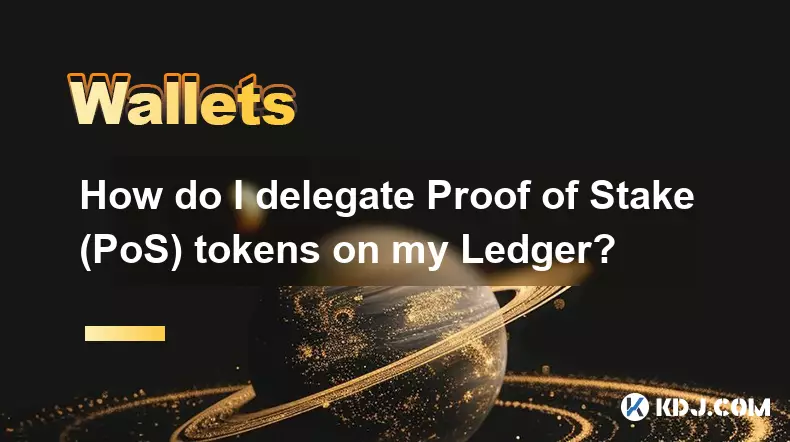
Understanding Proof of Stake Delegation with Ledger
1. Proof of Stake (PoS) networks rely on validators to secure the blockchain by staking tokens. Instead of mining, participants lock up their cryptocurrency to support network operations and earn rewards. Hardware wallets like Ledger provide a secure way to manage digital assets while engaging in staking activities.
2. Delegating PoS tokens through a Ledger device ensures private keys never leave the hardware, minimizing exposure to online threats. Users maintain control over their funds while participating in consensus mechanisms across various blockchains such as Ethereum 2.0, Cardano, Polkadot, and Solana.
3. The delegation process varies depending on the blockchain and its associated wallet interface. Most chains require users to install specific apps on the Ledger via Ledger Live before interacting with staking platforms. This step establishes a trusted connection between the hardware wallet and the blockchain’s ecosystem.
4. It is essential to verify the authenticity of every application and website used during delegation. Phishing sites mimic official staking portals to steal credentials or redirect transactions. Always confirm URLs and use only officially supported tools recommended by both Ledger and the blockchain project.
5. Some networks allow direct delegation from Ledger-supported wallets, while others may require additional setup steps such as generating validator addresses or configuring nodes. Familiarity with the technical requirements of each chain improves security and reduces errors during transaction signing.
Setting Up Your Ledger for Staking
1. Begin by updating your Ledger firmware to the latest version available through Ledger Live. Outdated firmware can lead to compatibility issues with newer blockchain applications or expose vulnerabilities that compromise asset safety.
2. Install the relevant blockchain app corresponding to the token you wish to delegate. For example, installing the 'Ethereum' app enables interaction with ETH 2.0 staking services, while 'Cardano ADA' supports delegation on the Cardano network.
3. Access a blockchain-specific wallet interface that integrates with Ledger devices. Examples include Lido for Ethereum, Yoroi or Daedalus for Cardano, and Phantom for Solana. These wallets recognize connected Ledger devices and allow secure sign-in using the hardware’s verification system.
4. Confirm all transaction details directly on the Ledger screen before approving. Since malicious software could alter data shown on a computer, physical confirmation on the device itself acts as the final safeguard against unauthorized transfers.
5. Store recovery phrases in a secure offline location. While the Ledger protects against digital theft, losing the seed phrase means permanent loss of access if the device fails or is misplaced.
Earning Rewards Through Secure Delegation
1. Once delegation is complete, rewards accrue based on the chosen validator’s performance and the network’s inflation model. These are typically distributed automatically and appear in the wallet balance after processing cycles conclude.
2. Rewards remain under user control at all times and cannot be accessed by the validator without explicit authorization. Validators only influence block production but do not hold custody of delegated funds.
3. Monitoring uptime and commission rates of selected validators helps maximize returns. Poorly performing validators may miss blocks, reducing reward payouts, while high fees eat into net gains.
4. Unbonding periods apply when withdrawing stakes from certain networks. During this time, tokens are locked and ineligible for transfer or further staking. Understanding these delays prevents unexpected liquidity constraints.
5. Always review gas fees and network conditions before initiating changes to delegation status, especially on congested chains where transaction costs may outweigh benefits.
Frequently Asked Questions
Can I delegate multiple PoS tokens from one Ledger device?Yes, a single Ledger supports numerous PoS tokens. Each requires its respective app installed through Ledger Live. Users can switch between different blockchain wallets seamlessly while maintaining hardware-level protection across all assets.
What happens if my Ledger device breaks during delegation?As long as the recovery phrase is preserved, a new Ledger can be set up to restore access to all delegated tokens. The blockchain records ownership independently of the device, so staking positions remain intact after wallet restoration.
Do I lose control of my tokens when delegating?No, delegation does not transfer ownership. Tokens stay within the user’s wallet address and can be undelegated at any time, subject to network rules. The validator only uses the staked amount for consensus participation.
Are there risks involved in choosing a validator?Choosing unreliable validators can result in lower rewards due to downtime or penalties known as slashing. In some blockchains, malicious behavior by a validator may cause partial loss of staked funds. Researching reputation and track record minimizes such risks.
Disclaimer:info@kdj.com
The information provided is not trading advice. kdj.com does not assume any responsibility for any investments made based on the information provided in this article. Cryptocurrencies are highly volatile and it is highly recommended that you invest with caution after thorough research!
If you believe that the content used on this website infringes your copyright, please contact us immediately (info@kdj.com) and we will delete it promptly.
- BlockDAG, DOGE, HYPE Sponsorship: Crypto Trends Shaping 2025
- 2025-10-01 00:25:13
- Deutsche Börse and Circle: A StableCoin Adoption Powerhouse in Europe
- 2025-10-01 00:25:13
- BlockDAG's Presale Buzz: Is It the Crypto to Watch in October 2025?
- 2025-10-01 00:30:13
- Bitcoin, Crypto, and IQ: When Genius Meets Digital Gold?
- 2025-10-01 00:30:13
- Stablecoins, American Innovation, and Wallet Tokens: The Next Frontier
- 2025-10-01 00:35:12
- NBU, Coins, and Crypto in Ukraine: A New Yorker's Take
- 2025-10-01 00:45:14
Related knowledge
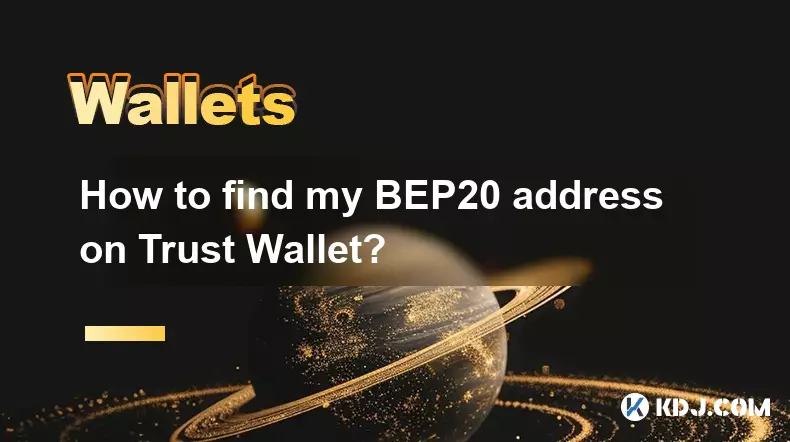
How to find my BEP20 address on Trust Wallet?
Oct 04,2025 at 06:19pm
Understanding BEP20 and Trust Wallet Compatibility1. Trust Wallet is a widely used cryptocurrency wallet that supports multiple blockchain networks, i...
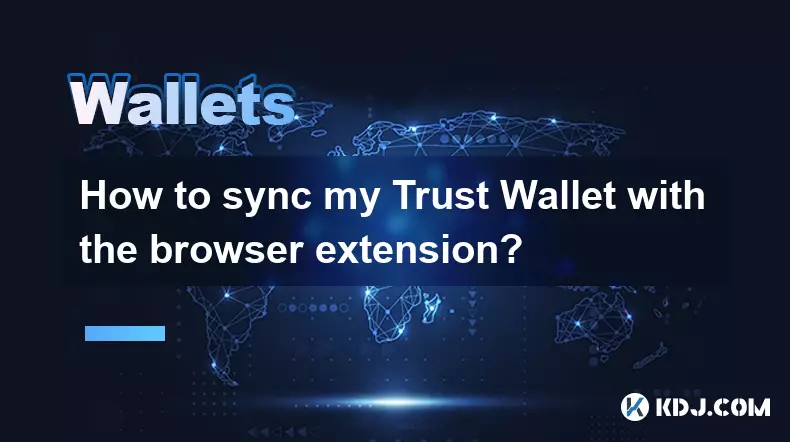
How to sync my Trust Wallet with the browser extension?
Oct 03,2025 at 06:19pm
Understanding Trust Wallet and Browser Extension IntegrationTrust Wallet is a popular non-custodial cryptocurrency wallet that supports a wide range o...
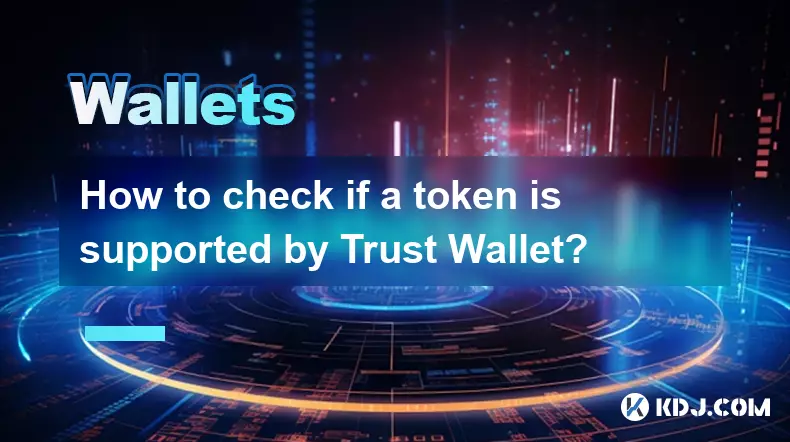
How to check if a token is supported by Trust Wallet?
Oct 04,2025 at 05:18am
Understanding Token Compatibility with Trust Wallet1. Trust Wallet supports a wide range of blockchain networks, including Ethereum, Binance Smart Cha...

How to get the Trust Wallet browser extension?
Oct 01,2025 at 12:37am
How to Access the Trust Wallet Browser Extension1. Visit the official Trust Wallet website through a secure internet connection. Navigate to the downl...

How to interact with a DApp using Trust Wallet?
Oct 02,2025 at 10:00pm
Connecting Trust Wallet to a DApp1. Open the Trust Wallet app on your mobile device and ensure your wallet is unlocked with access to your assets. Nav...
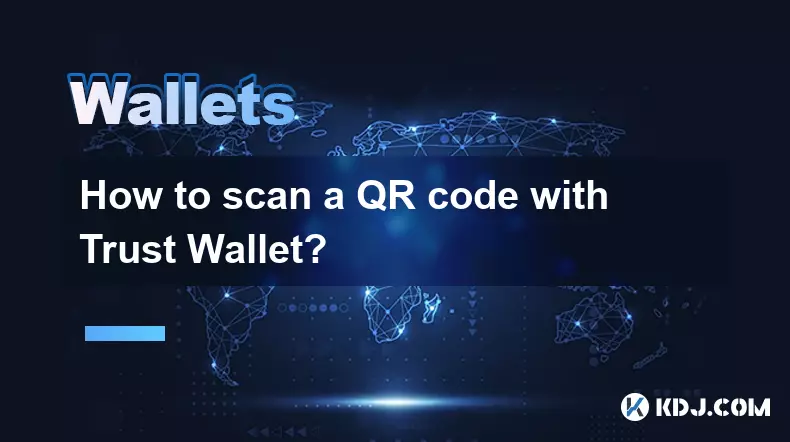
How to scan a QR code with Trust Wallet?
Oct 02,2025 at 03:37pm
Understanding QR Codes in Trust Wallet1. QR codes are widely used in cryptocurrency applications to simplify transaction processes. Trust Wallet lever...

How to find my BEP20 address on Trust Wallet?
Oct 04,2025 at 06:19pm
Understanding BEP20 and Trust Wallet Compatibility1. Trust Wallet is a widely used cryptocurrency wallet that supports multiple blockchain networks, i...

How to sync my Trust Wallet with the browser extension?
Oct 03,2025 at 06:19pm
Understanding Trust Wallet and Browser Extension IntegrationTrust Wallet is a popular non-custodial cryptocurrency wallet that supports a wide range o...

How to check if a token is supported by Trust Wallet?
Oct 04,2025 at 05:18am
Understanding Token Compatibility with Trust Wallet1. Trust Wallet supports a wide range of blockchain networks, including Ethereum, Binance Smart Cha...

How to get the Trust Wallet browser extension?
Oct 01,2025 at 12:37am
How to Access the Trust Wallet Browser Extension1. Visit the official Trust Wallet website through a secure internet connection. Navigate to the downl...

How to interact with a DApp using Trust Wallet?
Oct 02,2025 at 10:00pm
Connecting Trust Wallet to a DApp1. Open the Trust Wallet app on your mobile device and ensure your wallet is unlocked with access to your assets. Nav...

How to scan a QR code with Trust Wallet?
Oct 02,2025 at 03:37pm
Understanding QR Codes in Trust Wallet1. QR codes are widely used in cryptocurrency applications to simplify transaction processes. Trust Wallet lever...
See all articles










































































